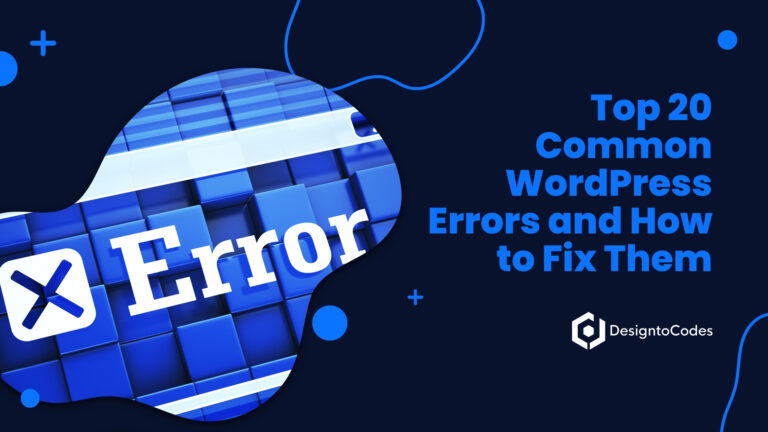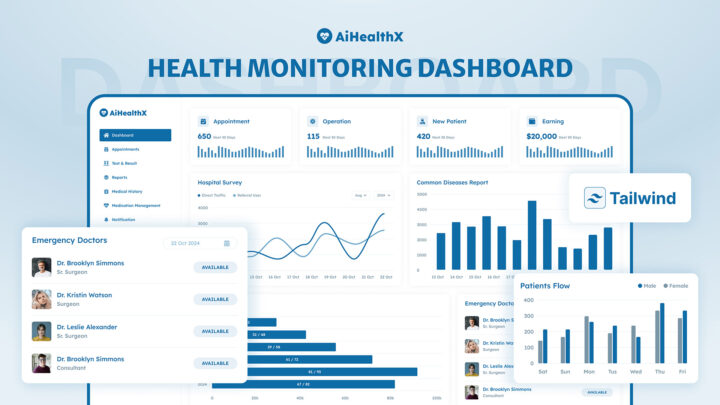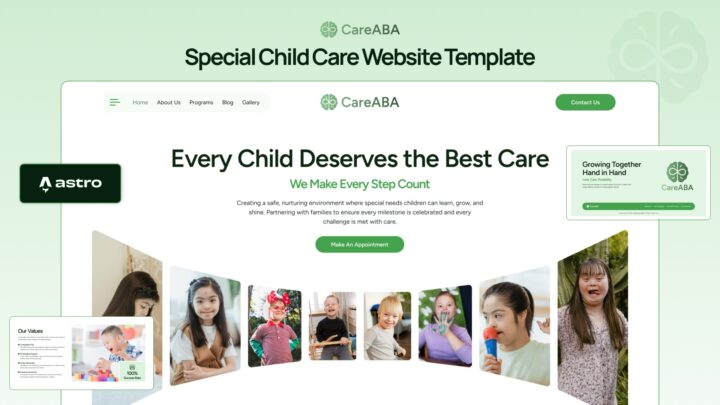
How to Fix 500 Internal Server Error in WordPress Elementor?

Are you facing a 500 Internal Server Error in WordPress while using Elementor? This comprehensive guide explains what it is and why it happens (especially with Elementor). It also provides 11 proven solutions with step-by-step instructions to fix the error and prevent it in the future.
What is a 500 Internal Server Error?
A 500 Internal Server Error is a general HTTP status code indicating that something has gone wrong on the web server, but the server cannot be more specific about the exact problem. In practical terms, it means the server encountered an unexpected condition that prevented it from fulfilling a request. Unlike a 404 error (page not found), which indicates a missing resource, a 500 error is a vague server-side issue, like a “locked door with no key,” where you only know something is broken but not what.
When a 500 error occurs on a WordPress site, visitors typically see a generic error page (sometimes just the text “500 Internal Server Error” or a browser-specific message). On Chrome, for example, the message might say that the page isn’t working and that the website server cannot handle the request. This error stops your site, which can be frustrating and detrimental to user experience and SEO. It’s essential to resolve 500 errors quickly, as they mean your site is inaccessible to users and search engines.
Why Does a 500 Error Occur in WordPress (Elementor)?
In WordPress, 500 errors can arise from a variety of underlying issues. When using Elementor, a popular page builder plugin, certain conditions can make 500 errors more common if the server is misconfigured or under-resourced. Here are some common causes, especially relevant to Elementor sites:
- Insufficient PHP Memory: Elementor is more resource-intensive than a standard WordPress install and requires at least 128 MB of PHP memory (512 MB recommended). If your site’s PHP memory limit is too low, heavy plugins or large page designs can exhaust it and trigger a 500 error. Running out of memory is one of the most frequent causes of 500 errors in Elementor.
- Plugin Conflicts: Using multiple plugins can lead to conflicts or bugs. If Elementor (or another plugin) has code that is incompatible with another plugin, it may result in a fatal error. Third-party plugins are a known cause of 500 errors with Elementor. For example, a poorly coded plugin or two plugins “fighting” over functionality can break the site. Conflicts with caching or security plugins during save/publish operations in Elementor are widespread.
- Theme Issues: Your active WordPress theme could have an error in its code (especially in functions.php or template files) that causes server errors. Outdated or poorly coded themes might conflict with Elementor’s output, leading to a 500 error when rendering a page.
- Corrupt .htaccess File: The .htaccess file controls important server rules (permalinks, redirects, etc.). If this file becomes corrupted or misconfigured, it can cause a 500 Internal Server Error across your site. This isn’t specific to Elementor, but if the error coincidentally started after a permalink change or plugin installation, .htaccess corruption could be the culprit.
- PHP Errors or Fatal Errors: WordPress runs on PHP under the hood. A fatal PHP error in your site’s code will result in a 500 error. This could stem from a bad custom code snippet, a plugin function error, or even Elementor’s code encountering an edge-case bug. The error could be in any PHP file – plugin, theme, or WordPress core.
- Server Configuration Issues: Sometimes, the server itself has issues. For instance, if you’re on shared hosting and the server is experiencing problems or misconfiguration (like improper file permissions, an overwhelmed server, or specific PHP modules missing), a 500 error can occur. One example is the mod_security firewall on Apache servers – if its rules wrongly block an Elementor AJAX request, it might return a 500 error. Similarly, hitting other server limits (CPU, I/O, database connection issues) can manifest as a 500 error.
- Too Many Revisions or Large Database Entries: This is specific to how Elementor saves data. The WordPress revisions table can bloat if you have saved a page hundreds of times. Too many post revisions can sometimes overload the Database and trigger a 500 error in Elementor (especially when trying to save or update a page). A huge page with lots of content or widgets could also strain the server when saving.
- Outdated Software: Running obsolete versions of WordPress, Elementor, PHP, or server software can introduce incompatibilities or known bugs. For example, using an older Elementor version with the latest WordPress (or vice versa) might cause unexpected errors. Similarly, older PHP versions might not handle some newer code correctly, leading to mistakes.
As you can see, 500 Internal Server Error is a broad symptom that something is wrong, and with WordPress+Elementor, there are multiple potential culprits. Next, we’ll walk through 11 proven solutions to fix this error. Each solution targets a specific potential cause. It’s recommended that these solutions be followed individually (where possible) until the error is resolved.
11 Solutions to Fix the 500 Internal Server Error in WordPress Elementor
Below is a list of 11 actionable solutions to troubleshoot and fix the 500 error. We’ll start with simpler fixes and move on to more advanced ones. Before proceeding, consider backing up your site (if possible) or working on a staging copy because some steps involve changing site files or settings. With that said, let’s get started!
1. Clear Cache and Refresh the Page:
Sometimes, the issue might be temporary or cached. Before diving into deeper troubleshooting, do a quick refresh. Clear your browser cache to ensure you’re not seeing a cached error page. Also, clear any WordPress caching plugin caches (if you use plugins like WP Rocket, W3 Total Cache, etc.) and CDN caches (like Cloudflare). After clearing caches, try reaccessing the page. In some cases, users have reported that a cached error was sticking around, and a simple cache purge fixed it. This step likely won’t solve persistent server-side problems, but it’s a quick sanity check. If the error was a one-time glitch or related to cached content, this could resolve it. Also, try another browser or incognito mode to rule out browser-specific issues. (If you still see the 500 error after this, proceed to the next steps.)
2. Enable WordPress Debug and Check Error Logs:
A 500 error doesn’t tell you what went wrong. Turning on debug Mode will force WordPress to log the actual PHP error message, which is extremely helpful for pinpointing the cause. To enable debugging, you can edit your wp-config.php file (located in your WordPress root folder). Add or update the following lines near the bottom of the file (just before the line “That’s all, stop editing!… “):

This ensures that errors are logged to a file instead of displayed (the log will be saved as wp-content/debug.log by default). After enabling this, reproduce the 500 error (e.g., try editing the page that causes it). Then, check the /wp-content/debug.log file via FTP or your hosting file manager to see what error is recorded. The log may show a specific PHP fatal error, memory exhaustion error, or a particular plugin file causing an issue. For example, it might pinpoint a failed function in a plugin or theme.
Additionally, you can check your server’s native error logs (usually accessible in your hosting control panel under “Error Logs”). Look for recent entries around the time the error occurred. Every day, things to spot include Allowing memory size to be exhausted (indicating a memory issue) or a specific file path and line number that triggered an error.
Identifying the error message gives you a clearer direction on what to fix. For instance, if the log says a particular plugin caused a fatal error, you know disabling or updating that plugin is key. If it shows “Maximum execution time exceeded”, that indicates a script timing out (you might need to increase the time limit or optimize the script). If the log points to an Elementor module running out of memory, then increasing memory (next step) is the fix. This debugging step is crucial – it’s like reading the “black box” after a crash to find out why it happened.
3. Increase the PHP Memory Limit:
Low server memory is a top cause of 500 errors with Elementor. Elementor’s official requirements state a minimum of 128 MB of PHP memory, and they recommend 512 MB for sites with multiple plugins. If your site’s memory is below these values, bumping it up can resolve the error instantly. You can check your current PHP memory limit in Elementor by navigating to Elementor > System Info in your WordPress dashboard, and looking for “Memory limit” (see screenshot below).

WordPress Environment info shows the PHP memory limit (here, set to 1536M, which is 1.5 GB). Elementor recommends at least 128 MB and 512 MB for optimal performance.
If your memory is low (e.g., 40M or 64M), you should increase it. The easiest way is to edit wp-config.php. Using FTP or your host’s File Manager, open the wp-config.php file and add the following line (or modify it if it exists) above the “stop editing” comment:

This sets WordPress memory to 256 megabytes. Now save the file and re-upload it to the server. If you retry your site now, the error may be gone if memory exhaustion was the issue. (If 256M isn’t enough, try 512M as the value.) For some hosts, you might also need to increase the PHP memory limit on the server. This can often be done in the hosting control panel’s PHP settings or via a custom php.ini. For example, in a php.ini file, you could add: memory_limit = 512 M. If unsure, ask your host to raise your PHP memory limit to 512 MB.
Increasing memory addresses cases where you see errors like “Allowed memory size exhausted” in the logs. Note: If raising the memory fixes the mistake, remember that it solved the symptom (lack of memory). However, you should still investigate what was consuming so much memory – e.g., a heavy plugin or script – to avoid hitting the limit again.
4. Fix a Corrupt .htaccess File :
A corrupted .htaccess file can cause a 500 Internal Server Error across your WordPress site. This file controls your permalink structure and other server rules. It can break the site if it becomes misconfigured (perhaps by a plugin adding rules or a manual edit gone wrong). The fix is to reset the .htaccess to a default, known-good state. Here’s how:
- Locate .htaccess: Connect to your site via FTP or use your host’s File Manager. The .htaccess file is in the root WordPress folder (the same folder as wp-content, wp-admin, etc.). It might be hidden, so ensure your file viewer is set to show hidden files (in cPanel File Manager, check “Show Hidden Files (dotfiles)”).
- Backup and Rename: Download a copy of the existing .htaccess to your computer (for backup). Then rename the file on the server to something like .htaccess_old. Renaming effectively turns it off, so WordPress will no longer use its rules.
- Create a New .htaccess: Now, create a new blank .htaccess file in the same directory (via File Manager, “New File” or by uploading a blank file). Open this new file for editing, and paste in WordPress’s default rewrite rules:

- These are the standard rules for WordPress permalinks. Save the file.
- Test the Site: Try loading your site again. If the 500 error was due to a bad .htaccess, it should now be resolved. Once you can access the WordPress dashboard, go to Settings > Permalinks and click “Save Changes” (no need to modify anything). This ensures WordPress regenerates the .htaccess with proper rules for your current permalink structure.
If the site still shows a 500 error, then the .htaccess was likely not the issue, so you can restore your backup .htaccess (or keep the new one with default rules). But if this fixed the error, you had a corrupt or problematic rule in .htaccess (sometimes introduced by plugins or manual edits). Now, the site should work with default rules. Re-apply any custom rules carefully, or consult plugin documentation before adding anything back to .htaccess.
5. Deactivate All Other Plugins:
Elementor might not be the culprit at all; it could be another plugin causing a conflict or error that surfaces as a 500 error when using Elementor. To test this, deactivate all plugins except Elementor (and Elementor Pro, if you use it). This includes caching plugins, security plugins, and any other add-ons. After deactivating, try reproducing the error (for example, edit the page with Elementor that was giving you trouble).
If the error is gone after all other plugins are off, then a plugin conflict is likely the cause. Reactivate your plugins individually, testing the site (or the Elementor page edit) each time, to identify which plugin triggers the 500 error. When the error comes back, you’ll find the problematic plugin. You can then keep it deactivated and find an alternative, or check with the plugin developer for an update/fix. Issues have often been reported with specific caching plugins, security/firewall plugins, or form plugins conflicting with Elementor’s operations. For instance, a security plugin blocking some Elementor actions might cause a server error when saving.
How to deactivate plugins? If you still have access to wp-admin, just bulk-select and deactivate them from the Plugins page. If you don’t have wp-admin access (site is down with a 500 error even on the backend), you can deactivate via FTP by renaming the plugins folder: navigate to /wp-content/ and rename the plugins folder to plugins. Deactivated (WordPress will treat it as if no plugins are installed). This will turn off all plugins at once. You can then rename it to “plugins” and log into wp-admin (plugins will appear inactive). Reactivate one at a time as described. This process is tedious but very effective in pinpointing a bad plugin.
6. Switch to a Default Theme:
If plugins aren’t the issue, the active theme could be. A faulty theme (especially one heavily customized or not updated) can cause server errors. To rule this out, switch your site’s theme to a default WordPress theme like Twenty Twenty-Three or Twenty Twenty-One. If you can access wp-admin, go to Appearance > Themes, ensure a default theme is installed, and activate it. Then test if the 500 error still occurs. If you cannot access wp-admin, you can switch the theme via FTP: go to /wp-content/themes/ and rename your current theme’s folder (e.g., if the theme is “mytheme”, rename it to “mytheme.off”). WordPress will revert to the default theme (you must have one like twentytwentythree present in the themes folder) or no theme. Alternatively, you can edit wp-config.php to force a theme switch by adding lines for WP_DEFAULT_THEME. But simply renaming or removing the custom theme folder is quick.
After switching to a default theme, try using Elementor or visiting the pages that had issues. If the error is resolved, your theme has some code causing the error. The theme may not be fully compatible with Elementor or have a template that fails. You may need to debug the theme’s code (check error logs for references to theme files), or contact the theme developer for a fix. If the error persists even with a default theme, then the theme was not the cause, and you can revert to your original theme.
7. Use Elementor Safe Mode:
Elementor has a Safe Mode feature designed to troubleshoot issues by loading the Editor with minimal interference from other plugins or themes. Safe Mode temporarily turns off certain elements (it’s like launching Elementor in isolation). This can be useful if you suspect a plugin or theme conflict but want a quicker way to verify it. To use Safe Mode: In Elementor > Tools > Safe Mode in your WordPress dashboard, activate it (set Safe Mode = Enable, then Save Changes). Now edit the page that was causing a 500 error. If it loads and saves fine in Safe Mode, that strongly indicates the problem lies with another plugin or the theme (since Safe Mode bypasses them). Elementor’s documentation suggests debugging in Safe Mode by selectively turning plugins on/off to find the conflict – essentially the same approach we did manually above, but Safe Mode gives a quick confirmation.
If Safe Mode doesn’t allow editing either (the error still happens even in Safe Mode), the issue might be deeper (like server config or something specific to that page’s content). Keep Safe Mode off in that case and continue with the following steps. But if Safe Mode did work, use it to narrow down the culprit: turn off Safe Mode, then try deactivating the suspect plugins or switching themes as we did in steps 5 and 6 to find the exact cause. Safe Mode is just another tool in your troubleshooting toolkit. Remember to turn it off when done, so your site runs normally (Safe Mode only affects the Editor, not the live site, but you don’t want to keep it on unnecessarily).
8. Optimize the Database (Clear Revisions and Data Bloat):
If the 500 error occurs when saving or updating content in Elementor, your Database might be a bottleneck. Elementor pages with too many revisions or autoloaded data can strain server operations. A known solution is to clean up your WordPress database, mainly by removing old revisions. One easy way is to use the plugin WP-Sweep (by Lester Chan). Install and activate WP-Sweep, then go to Tools > Sweep in your Dashboard. From there, look for the section on post revisions. With one click, WP-Sweep will delete unnecessary post revisions, trashed posts, and other cruft. By clearing out potentially hundreds of old revisions, you reduce the load on the Database when saving posts. Many users have found that too many revisions were why Elementor timed out or errored on save, and cleaning them fixed the issue. After running WP-Sweep, try editing/saving with Elementor again.
Another tactic for an error on a specific page is to recreate the page from a template (this can bypass whatever glitch affected the original page). Elementor allows you to save a page design as a template and import it into a new page. To do this: edit the problematic page, click the arrow next to the Update button, and choose “Save as Template”. Could you give it a name and save it? Then go to Pages > Add New, launch Elementor on a blank page, and use the folder icon to open My Templates. Insert the template you saved. Now publish this new page. This effectively clones the content into a fresh page, which often removes any corruptions or anomalies that the old page had. You can discard the old page if the new one works.
There is a “Save as Template” option in Elementor. If one specific page triggers a 500 error whenever you update it, you can save the content as a template and reuse it on a new page to potentially eliminate the issue.

By optimizing the Database and handling content smartly, you alleviate stress on the server. These steps address cases where the error stems from data overload rather than a faulty code. If the error persists, move on to the following solutions.
9. Update Elementor, WordPress, and PHP to the Latest Versions::
Running outdated software can lead to known bugs or incompatibilities that cause 500 errors. Ensure that WordPress core, Elementor (and Elementor Pro), and all other plugins and themes are updated to their latest versions. Elementor’s team regularly fixes issues, so it’s possible a 500 error was caused by a bug that has since been resolved in an update. In Elementor’s troubleshooting guide, the first step for site-wide errors is to update to the latest Elementor and Elementor Pro versions.
If you can access the Dashboard, go to Dashboard> Updates and apply any pending updates. If the error prevents admin access, you can manually update plugins/themes by downloading fresh copies and overwriting them via FTP. Also, consider updating your PHP version if it’s old. Elementor works best on PHP 7.4 or higher. If your server is on PHP 7.0 or an unsupported version, ask your host to upgrade it (many hosts allow switching PHP versions from their control panel). Newer PHP versions have performance improvements and may eliminate specific errors.
After updating, check if the 500 error is gone. If yes, it’s likely an issue was resolved by the new code. For example, an older Elementor might have made a mistake that manifested on your setup, and updating it patched it. Alternatively, updating WordPress might replace a corrupted core file, causing the error. Keeping everything updated also improves security and stability, which helps prevent 500 errors in general. (Note: In the future, always try to update on a staging site first or take backups – just a good practice to avoid introducing new issues.)
10. Reinstall WordPress Core Files (and Elementor, if needed):
If the error persists, there might be corruption in one of the core WordPress files or the Elementor plugin files. Reinstalling WordPress core can replace any broken files. This does not erase your content. You can do this by downloading the latest WordPress package from wordpress.org, extracting it, and uploading the wp-admin and wp-includes folders via FTP to your server (overwrite the existing folders). This will replace all core files with fresh copies, leaving your wp-content (plugins/themes/uploads) untouched. Many users have found that replacing core files fixes mysterious 500 errors when everything else looks fine.
Similarly, consider reinstalling the Elementor plugin if you suspect its files might be corrupted. Deactivate and delete Elementor (your designs will not be lost, as they are in the Database), then reinstall the latest version of Elementor fresh from the Plugins repository. Reactivate it and test again.
If a particular plugin (other than Elementor) was indicated in error logs as causing an issue, you might reinstall that plugin, too. Essentially, refreshing the codebase ensures no file was accidentally modified or is missing. For example, if a core WordPress file like /wp-includes/load.php was incomplete, a 500 error could occur—replacing it will solve that.
After re-uploading core and key plugins, try the site. If the internal server error was due to file corruption, it should now be resolved. If not, we have one more area to investigate.
11. Check Server Configuration (Permissions, mod_security, etc.) or Contact Your Host:
At this stage, if you’re still seeing the 500 error, it’s time to look at server-level issues or get help from your hosting provider. Some things to check or ask your host:
- File/Folder Permissions: Ensure that your files have the correct permissions. Typically, WordPress files should be 644 and folders 755. Incorrect permissions can cause server errors (for example, if files aren’t readable by the server). While permissions issues often throw a 500, they sometimes manifest differently, but it’s worth ruling them out. You can adjust permissions via FTP or a control panel.
- Server Error Logs: We enabled WP_DEBUG earlier, but also ask your host to inspect the Apache/Nginx error logs for your account. There might be clues (like an internal module failing, or a specific process hitting a limit).
- mod_security or Firewall: If you have a 500 error specifically when doing something (like saving in Elementor), it could be mod_security (a security module on many Apache servers) blocking the request. The ruleset might flag something in the Elementor save request as suspicious (a false positive) and abort it, causing a 500. Ask your host if mod_security is triggered. They can temporarily turn off mod_security or allow the specific rule for your site to test. This has resolved Elementor save issues in some cases.
- PHP Settings: Other PHP configuration limits can cause issues. For instance, Elementor can create long POST requests when saving page data. If your max_execution_time (time a script can run) is too low, it might time out and throw a 500. Consider increasing it to 300 seconds in php.ini or via host settings. Similarly, a low max_input_vars (which limits how many form fields can be processed) can choke on huge Elementor pages, potentially causing errors. Setting max_input_vars to 20000 (for example) can help if you have a significant page. These changes are advanced, but your host’s support can usually handle or guide you.
- Out of Resources: On some shared hosts, if your site exceeds specific resource quotas (CPU, RAM, database queries), the server may return 500 errors or kill processes. Check if your hosting dashboard has any resource usage graphs. You should upgrade your hosting or optimize your site to handle the load if you see spikes.
If all else fails, contact your hosting provider’s support. Explain that you’ve tried numerous troubleshooting steps and still get a 500 Internal Server Error. They might identify a server-side issue or something unique to their environment. Good hosts can often pinpoint issues by checking server logs or replicating the error. Don’t hesitate to reach out—sometimes what looks like a WordPress problem is a server problem, and the host can fix it.
After doing these checks or getting host assistance, you should have the issue resolved. At the very least, you’ll have more information about the cause. Once the immediate problem is fixed, let’s ensure it doesn’t happen again.
Tips to Prevent Future 500 Errors
Solving the error is step one; step two is prevention. While it’s impossible to guarantee you’ll never see a 500 error again, following best practices will significantly reduce the chances:
- Keep WordPress, Elementor, and Plugins Updated: Updates often include bug fixes and improvements in compatibility. Running the latest versions helps prevent known issues that could trigger errors. Make a habit of updating regularly (but take backups before major updates).
- Use Quality Plugins and Themes: Limit your site to well-coded, reputable plugins and themes. Before installing a new plugin, check its reviews and the latest update date. Avoid plugins that overlap in functionality (to minimize conflicts). Remove any plugins you don’t need.
- Monitor Website Health: Use tools or plugins (like Wordfence, Query Monitor, or your host’s monitoring tools) to monitor errors and performance. Catching a warning or minor error early (via logs or email notifications) can allow you to fix an issue before it escalates into a full 500 failure.
- Adequate Hosting Resources: Ensure your hosting plan has enough resources for your site’s needs. If you build large Elementor pages with lots of media, consider a hosting plan with sufficient memory and processing power. Sometimes upgrading from basic shared hosting to a higher tier or a managed WordPress host can prevent resource-related errors.
- Regular Backups and Staging: Always have a backup solution in place. If something goes wrong (like a plugin update causing an error), you can quickly restore. Use a staging site to test significant changes (like plugin updates or new plugin installs) – this can help you catch errors in a safe environment. Services like BlogVault or hosting-provided staging are excellent for this.
- Optimize Database Periodically: Just like we used WP-Sweep to clear revisions, perform periodic database clean-ups to keep it lean. Clean out trashed posts, spam comments, and transients. A smaller, optimized Database means faster queries and less chance of timeouts.
- Security Measures: Malicious activity (e.g., an attacker exploiting a vulnerability) can cause some 500 errors. Use security plugins or services to protect your site. Also, use strong passwords and two-factor authentication for logins. Preventing hacks avoids the kind of tampering that could lead to server errors.
Following these practices makes you far less likely to be blindsided by a 500 Internal Server Error. And if it does happen, you know the steps to troubleshoot it swiftly.
FAQ (Frequently Asked Questions)
Q1: How do I fix Error 500 on Elementor?
A: Fixing a 500 Internal Server Error in Elementor involves identifying and addressing the root cause. Start by enabling WordPress debug to see actual error messages in the logs. Common fixes include increasing the PHP memory limit (Elementor needs at least 128MB, but 512MB is recommended), deactivating other plugins to find conflicts, and switching to a default theme to rule out theme issues. Also, check your .htaccess file for corruption and regenerate it if needed. If a specific page is causing the error, try cleaning up revisions or using the Save-as-Template trick to rebuild the page. Finally, ensure that WordPress, Elementor, and PHP are updated to the latest versions. These steps resolve the majority of Elementor-related 500 errors.
Q2: Why am I getting a 500 Internal Server Error when editing with Elementor?
A: If you encounter a 500 error specifically while editing or updating a page with Elementor, it could be due to server resource limitations or a conflict during the save process. For example, you might have hit the PHP memory limit (causing a fatal error), or a plugin (like a caching or security plugin) might be interfering with Elementor’s AJAX save requests. Another possibility is that the page has a vast amount of data (many revisions, extensive content), and the server is timing out or hitting a limit when saving. In this case, cleaning up the Database (removing revisions via WP-Sweep) or increasing PHP execution time could help. Always check the debug log – if it mentions a specific plugin or a specific error (like memory exhaustion), that will indicate the cause. Once you identify the cause, apply the corresponding fix (e.g., increase memory, turn off the conflicting plugin, split the page into smaller parts, etc.).
Q3: How can I prevent 500 errors on my WordPress site in the future?
A: To prevent 500 Internal Server Errors, keep your site’s software up-to-date (WordPress core, themes, plugins) and use a well-resourced hosting environment. Regularly back up your site to recover quickly if something goes wrong. It’s also wise to use a staging site to test new plugins or major updates before applying them to your live site. Monitor your site’s error logs occasionally or use a plugin that notifies you of issues so that you can catch problems early. Optimizing your database (clearing revisions, etc.) and keeping the number of plugins in check will reduce the likelihood of overload. Finally, if your site is mission-critical, consider a host that provides automatic healing or recovery from errors and good support, so even if a 500 error occurs, it can be resolved with minimal downtime.
Following the troubleshooting steps and best practices above, you should be able to fix any 500 Internal Server Error related to WordPress and Elementor, and hopefully prevent it from returning. Maintaining your WordPress site carefully ensures that you and your visitors enjoy a smooth, error-free experience. If you need any ready Elementor website template for your business, feel free to reach out DesignToCodes! Good luck, and happy designing with Elementor!
Recent Posts
Recent Products
Share This Post
Subscribe To Our Newsletter
Get More Update and Stay Connected with Us


















